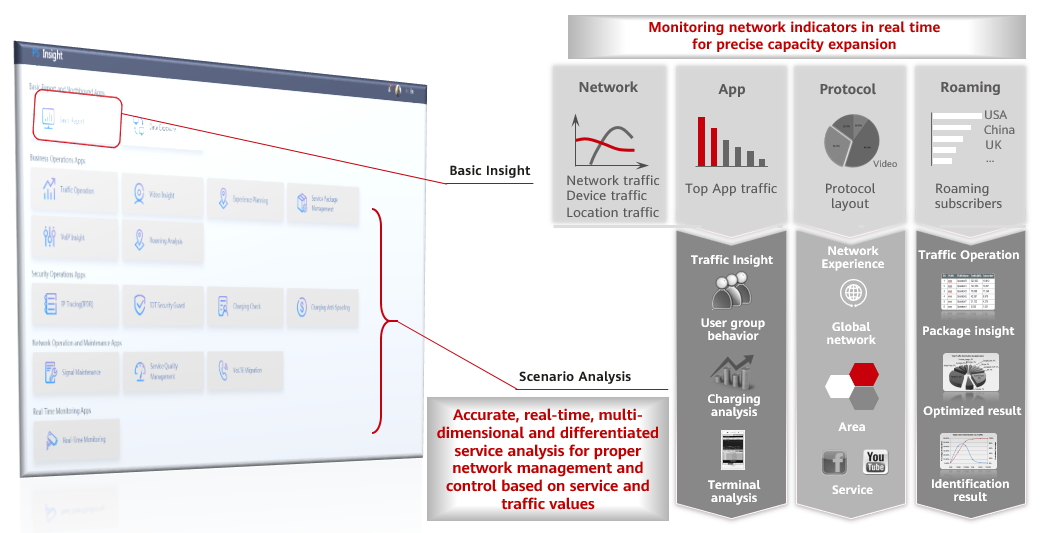Huawei CloudMSE Solution Promotes Intelligent Upgrade of Communications Networks
Undoubtedly, the pandemic has seriously weakened the real economy, but promoted the Internet economy and has of course transformed activities remarkably from offline to online modes.
May 19, 2020

Recently, Mary Meeker, known as the Queen of the Internet, released a report titled "The Internet Trends under the COVID-19 Pandemic." This report uses data to elaborate on changing trends in people's work, life, and entertainment modes under the COVID-19 pandemic. Undoubtedly, the pandemic has seriously weakened the real economy, but promoted the Internet economy and has of course transformed activities remarkably from offline to online modes. This report lists over 10 categories of offline activities transformed to online modes. These cover online office, online teaching, telemedicine, online retail, and home digital entertainment. The report shows that online competitive games keep increasing, and in March 2020, the eSports game League of Legends recorded 430,000 views and 123,000,000 hours of streaming media playback. Public data in China also shows the robust growth of online applications, and during the Spring Festival, the game Honor of Kings attracted 54 million active players daily at a year-on-year growth of 75%. COVID-19 will cause fundamental changes to people’s online behaviors, as online shopping increased enormously during the SARS pandemic.
Increasing online activities pose increased requirements on carriers' networks for higher uplink and downlink bandwidth and lower latency. The busy service hours are extending from non-working to all-day hours, and the busy traffic areas also become quite different. Public data indicates that Sprint has increased by 32% for streaming video usage, and 85% for video gaming since early March 2020. In addition, Vodafone's networks in Europe, including their networks in Italy, Spain, Germany, and the UK, have faced severe challenges resulting from COVID-19, because data traffic has increased by 50%.
How do carriers cope with the impact of subscriber's behavior changes and new services on the communications networks and ensure quality user experience? This requires more intelligent networks, service awareness, and better understanding of users. Huawei CloudMSE solution for intelligent network pipes complies with AI-based algorithms and provides carriers with capabilities. This includes efficient service identification, multi-dimensional network insight, and traffic shaping based on service experience and value. It helps carriers build intelligent network pipes to meet network requirements in this difficult situation.
Figure 1: AI-based service awareness engine 
Service awareness (SA) is the basis of refined network operation. With the rapid growth of pipe traffic, carriers are eager to maximize the value of traffic in pipes and provide better service experience. However, they should first understand the service traffic and proportion in pipes. For example, video traffic accounts for 60%, instant messaging 5%, and gaming 10%. Moreover, video services are classified into short online videos, long videos, and live videos. Therefore, carriers shall be capable of SA. After SA, they can assure experience for different services or manage traffic by the value of service flows for refined operation. OTT currently serves as a key provider of services. OTT applications are updated more frequently than conventional services of carriers, and new applications and services are increasingly emerging. The conventional SA method based on manual analysis and feature database updates cannot meet the requirements of new SA. This is because it takes a prolonged time to discover, analyze, and update new services.
Huawei CloudMSE solution provides an AI-based SA engine. This engine efficiently identifies new services and generates new service features by real-time and online machine learning of live network traffic. It then automatically updates the feature database to ensure an identification accuracy that is higher than 95%. For example, it assists carriers quickly identify and generate the features of a significant number of new services including online education and home office. In this way, carriers can identify new services on time, enabling the PCRF to customize new package policies for fast provisioning of new packages, and promoting experience assurance for important services.
Figure 2: Multi-dimensional network insight 
After understanding the service composition of pipes, carriers will get involved in in-depth network insight and analysis for different operation requirements. For example, they can use experience insight and analysis of different services in differing areas and time periods to formulate policies for an improved experience. This requires carriers to be capable of multi-dimensional and E2E network insight and analysis. However, the conventional report system based on auxiliary O&M cannot meet the current requirements for network insight.
Huawei CloudMSE solution enables carriers to conduct intelligent network insight and analysis, which achieves multi-dimensional insight and intelligent analysis regarding networks and services. For networks, it helps carriers view KPIs in multiple dimensions including location, time, access type, NE type, and APN. For services, it provides insight in the aspects of applications, packages, and service types, as well as analysis of service experience and abnormal user behaviors. The results from intelligent network insight and analysis provide a basis for targeted capacity expansion and differentiated experience management. In addition, Huawei cloud-based microservice architecture can be smoothly upgraded to support 5G NWDAF and NEF for service-based and converged network analysis.
Figure 3: Traffic shaping from service experience and value 
Based on quick SA and in-depth insight into new services, Huawei CloudMSE solution can implement differentiated management. This addresses the experience of different services or the value of different service traffic. In this way, the traffic proportion can be optimized for fixed pipe resources to ensure the experience of services and improve the value of pipe traffic. For example, during working hours, networks can be accelerated or dedicated bearers can be established accurately for online education and home office services to ensure low latency and zero frame freezing. In addition, for entertainment video services, the solution can ensure smooth traffic at a low video bit rate, thereby using less resources.
To date, Huawei CloudMSE solution has been successfully put into commercial use on over 60 networks globally. With the changes of people's work and lifestyle and more requirements on networks, it will become increasingly popular in network operation, making people's work more efficient, online experience better, and life more colorful.
This content is sponsored by Huawei.
You May Also Like


_International_Software_Products.jpeg?width=300&auto=webp&quality=80&disable=upscale)







